Chevy Volt, loaned to me for the week of South by Southwest Interactive for review purposes
When it comes to car reviews, Gear Diary has some experienced people to check things out for you. But this time, neither our intrepid (and superlative) car reviewer David Goodspeed — and how excellent is that a name for a car reviewer, right? “Goodspeed”? Awesome! — nor our fearless lead editor, Judie (who has done car reviews before as well), could attend South by Southwest Interactive (SXSWi) this year. On the other hand, ol’ Doug lives in Austin. So I got the chance, for the week surrounding SXSWi, to tool around in a new Chevy Volt hybrid car! What did I think? Read on and find out!
First I want to let you all know my prejudices. I have wanted electric cars to be successful for a long time. Growing up during the first oil shock back in the 70s, it was obvious we were going to have to power our transport system with something other than fossil fuels. People have been looking into multiple different options — electric cars, hydrogen-powered/fuel cell cars, even ones powered by flywheels! — but it’s electric cars that have gotten the most attention. After all, if you can just plug in your car to your house current, the car companies won’t have to build an entire new infrastructure to take over from the millions of gas stations currently dotting the countryside. That’s a big plus. Also no tanker trucks carting the gasoline around; no giant, leaky tankers on the water hauling crude oil back and forth; etc.
But I have always been disappointed by the reality of electric cars. The first serious stab at it was the EV1, also by General Motors like the Volt. The EV1 had a recharge time of 8-12 hours, with a range of less than 100 miles. It was only a two-seater, and didn’t exactly come with all the amenities–cruise control, power windows, and the like. Plus it looked goofy. It was a first stab, after all.
Car makers have an answer in the hybrid. Hybrids have both a gas and electric motor. This gives you greater range, doesn’t put you at the mercy of an engine that could cut out on you at 50 miles, and ensures that should your battery bail out on you, you have that good ol’ internal-combustion engine to get you where you need to go.But we’ve had 20 or more years of development since the EV1, right? And it’s true: electric cars now come with as many bells and whistles as your ordinary car–air conditioning, power windows, cruise, and everything else the modern driver expects. And while yes, they’re still small, you have 4-seat electric cars now. But the problem is, the charge time on them is still in the 8-12 hour range, and they still have a range of less than 100 miles. Which is a big issue for most people.
A lot of car manufacturers say things like, “Well, if you only commute 15 miles each way, that’s more than enough range!” The problem with that is, as Carly found out, you end up doing a ton more driving than just your commute. That run to the dry cleaner during lunch. Your jaunt over to your chiropractor appointment. Picking up your daughter at school and taking her to her theatrical costuming class. Taking the dogs on their walkies at your local leash-free dog park. And on and on. (And in the San Francisco Bay Area, where I lived for 25 years, it seems like you have to get in your car for everything, and everything seems at least 5 miles away.) So 100 miles or less (usually less) simply doesn’t cut it.
Which brings us to the Chevy Volt. The Volt is Chevy’s hybrid. Chevy has taken the lessons that they learned with the EV1, clearly looked at the kinds of things you get in a Prius, and come up with I think is a really solid entrant in the hybrid category. As I mentioned, I got a chance to use a Volt for an entire week, and forced myself to use it as my daily car for all uses, from tooling around town between SXSWi venues to driving kids hither and yon to (light) grocery shopping.
Chevy has come a long way in the last few years. My experience with Chevys in the past (through rental cars, generally) has not been happy; I have been quite displeased with how they drive, their road and engine noise, the fit and finish of their cars, and many other issues. But after my experience with a Camaro rented from Enterprise last April (“Everyone wants a Camaro” the nice young lady at GM’s Austin customer service office told me when I mentioned to her how much I had liked it), and now with the Volt, I am comfortable saying that they have really made quantum leaps. And I say this as the owner in my life of two Toyotas, three Hondas, and a BMW, just so you know where I’m coming from. I have a huge distrust of domestic auto makers, and I was genuinely impressed.
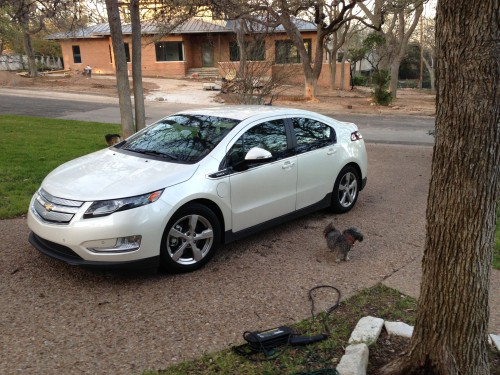
Chevy Volt in my driveway along with our Shih-tzu/poodle mix, Rosie (Isabelle the Corgi in the background sniffing a tree); charging unit on grass in foreground
I use a Honda Accord as my daily driver, so my first impression was, “Ah, right; a compact! I remember those!” But it’s not tiny, and it’s not ugly, as so many compacts can be. It’s a nice, solid, decent-looking compact. The head, leg, and interior room is exactly what you would expect in a compact with one exception: There is a large transmission hump through the center of the car, much like in a front-engine, rear-wheel drive vehicle. This means that it is a four-seater and no nonsense; no fitting an extra small kid in the middle in the back.
I was very glad to have an entire week with the Volt, because in my experience, no matter how good a new car is, it takes you a while to get used to the fact that it’s different from your old car. The buttons and dials and readouts are in different places; the controls are laid out differently; things works just a bit differently. I’m glad I got a chance to get over that so that when I complain about something below, it’s because I genuinely don’t like it, and not simply because it’s “different”, if you know what I mean.
The Volt uses a fob rather than a key, which means that you don’t have to insert anything into the ignition, you just need to put your foot on the break and press the “Start” button to get going (so long as the fob is in range of the car). I understand this is pretty common with European cars, but it’s new to me, and took me a bit to get used to. But I’ll tell you, once I did, I loved it. I could keep the fob in my pocket or hooked onto the carabiner on my gear bag and never take it out. This may seem like a small thing, but after a week of not having to fumble for keys, fiddle with fitting them into the ignition in the dark, and all the other nonsense associated with keys, I got to absolutely love it and hated going back. Good choice there, GM!
The car is of course a hybrid, with a maximum electrical motor range, according to GM and the dash readout, of 34 miles (or so, depending on conditions, and that’s right about what I got). On regular house current, it take frigging forever to charge the thing from zero — I did it once, and it took somewhere around 12 hours. GM says that it only takes two-three hours using a “Type 2” charger, i.e. one that you install in your house (or at charging stations around town), and honestly I believe them.
Since most of my driving is around town, other than the once for experimental purposes, it never went down to zero, and I got into the habit of simply plugging it in whenever I got home, like I do with my iPhone whenever I get back to my desk. It did make me worry a bit about the various electrical components, though; is the charger unit okay when it rains? What about the plug on the car itself? I don’t have a garage or car port, so if I have an EV, that charger unit is going to be out there in the open basically all the time. How will it stand up to the elements?
If you plug in the car to charge and it is not plugged in properly, it beeps at you. I’m sure that the particular tone the car uses indicates all kinds of details — You’re not fully plugged-in! You’re too close to something on the side! You’re too close to something in the back! etc. — but I never did get used to them enough to decode them all. I got used to the, “You’re not plugged in properly!” one, though, because I heard it a lot; either the plug unit is a bit persnickety, or I’m just lame at plugging it in. I report, you decide!
Why not just keep it in the car itself, or sitting on the porch under cover, you might ask? Well, it’s heavy and bulky, for one; hauling it around is a PITA. And second, getting it in and out of its under-the-floorboards location in the hatch is a real PITA; even the guy who picked up the car had trouble with it. So leaving it out, exposed to the elements, is the obvious easiest solution for the user, and I have to think it won’t hold up to well under that. If you have a garage, you’re probably fine. If not? Well …
Here are my impressions from driving it around town:
- The car rides very, very low and scrapes bottom quite frequently. I scraped getting in and out of my driveway every single time — it’s a slight hill. Going over speed bumps. Going up parking garage inclines. Basically all the time.
- Power-wise, it’s a compact. This baby is never going to blow anyone’s doors off. You want that, you should probably go for the Camaro! It neither disappointed me or pleased me in that area.
- The transition between electric power and gas was very, very smooth; I honestly couldn’t tell when it happened. Which is exactly what I want from a hybrid!
- The brakes–which I assume are at least partly regenerative–that is, they power the battery when you use them–were very non-grabby and took some time to get used to. Getting back into my Honda, I tended to over-brake for several minutes before my reflexes adapted.
- The visibility is great; unlike in the Camaro (where making it look cool definitely reduced the amount of windowspace), there were lots of windows for great road visibility.
- I admit to a strong preference for analog speedometers; I don’t mind having a combo, but I don’t like a plain digital readout which is, unfortunately, what the Volt has. And in addition, I found the entire main readout to be very, very busy and not a good use of space. Do you really need that much space to tell you what the battery status is? And if you look at the photo below, that bar on the right is to help you drive more economically; when the bouncing ball is exactly halfway up, you’re doing well. If the ball goes to high or low, you’re not being as economical as you could be. Well, okay, I guess, but again: Does it need that friggin’ much room? And as for those other items below in the bottom center–the “A” and “B” — I guess they were trip mileage counters or something? I dunno, but I found it all very busy and ugly.
With regard to the equipment, my model was fully loaded, with power doors, windows, mirrors, seat-warmers, and pretty much every other modern convenience. What did I think of all the gadgets and gizmos?
- Chevy calls the center console an “Infotainment System”, which I find kind of silly, honestly. As you can see in the photo, there is a large touch screen at the top, and the usual stack of controls beneath. Interestingly, none of the buttons are physical, only touch. I have to say that even after a week I didn’t get used to this; when driving, I really need the feedback of a physical button. (There is an audible “click” noise when you for example press fast-forward, but it’s not enough for me.)

Power button is the blue thing just to the left of the gear shift; parking brake is the little lever just to right of the gear shift
- The parking brake is not a lever on the floor, but rather an odd switch on the dash; I never got to like this. I would bet it’s to save weight, but I just didn’t like it. I did like that you literally can’t move the car when it’s engaged; after all, how many of you out there have driven around for a while with the parking brake engaged?
- I also wasn’t a big fan of how they organized the menus, and the navigation from one menu to another; it struck me as awkward and clunky, and entailed a lot of guessing while sitting in the driveway.
- On the other hand, I loved how well the system operated with my iPhone. The Bluetooth connectivity was wonderful, and if you had BT enabled when you got into the car, it linked right away. (I had noticed this on the Camaro as well, so clearly GM has spent some solid time working on this.) In addition, in the center arm rest is a USB jack, and you could jack into the system instead of using BT, which was quite handy. I started leaving a spare cable just dangling there. I can easily imagine using it with Siri regularly (and Dan using it with Dragon Dictation!), were I to get a Volt for myself.
- I never really got used to the touch screen. It seems to operate with a combination of touch and using the dials below; I really don’t like hybrid touch screens (like the ones on the checkout line at the grocery store, for example), and didn’t like this one much, either.
- The car comes with a rear-facing camera, which displays automatically on the Infotainment screen when you shift into reverse. You can’t rely on it, but it’s definitely a big help when trying to, e.g., avoid an idiot who has parked just across the street behind your driveway leaving you with very little room. There are also proximity sensors on the car, telling you when you are getting too close to things in front, back, or on the side. The sound of the beeps increases the closer you get, and the tone of the beep is different–at least, I think so–depending on whether you are closer in front, the rear, or on the sides. I never decoded which beep meant what, but I only had it for a week. (And on numerous occasions seriously considered shutting the beeps off entirely, which I’m pretty sure can be done–I found them somewhat annoying.)
A couple of other things I want to note about the Volt in closing:
- All the exterior door handles have locking buttons. That is, if you have the fob, rather than having to fit a key into a hole on a particular door, you just press the button on the handle. I really liked that.
- I found the lack of trunk space disturbing. It would be hard to do a full grocery run (without folding down the rear seats, of course), and when I picked up Sami at the airport, I took the Honda because I wasn’t sure we could fit both her suitcases and her shoulder bag in the Volt. This was probably over-cautious on my part, but wanted to mention it.
- Here in Austin, as part of an effort to encourage people to buy EVs, around town you can find numerous charging stations. Including in some public parking garages, where the slots for the EVs are closer to the venue and reserved for EVs, which is a nice little bonus.
- The main door lock for all four doors is on the dash, not on the door on the driver’s side, as in most cars I’m used to. Not a big thing, but a bit annoying.
- The electric power outlet was behind a door on the front right by the driver’s side door, while the gas cap (which I never used!) was behind the rear passenger door. Both were controlled by buttons set into the driver’s door.
So what did I think of the Volt? I liked it; I could easily see myself driving it regularly, especially given my “work at home” schedule and the fact we have a giant Honda Odyssey minivan for our second car. Could I use it if I had to commute? Probably, although I would end up using gas more (horrors!). The kids just loved it, and kept asking if we could keep it. Which is notable, given that they are (respectively) 17 and 14; the 17 year-old (Maggie) wondered if we could get one for her, and given that the 14 year-old (Joseph) is as nuts about fancy cars as you can imagine, that’s something to bear in mind.
The Volt is not flashy; it’s not powered to blow your doors off or styled to turn heads like the Camaro, no. And no, it’s not a family hauler, either; it’s a compact with limited trunk/hatch space, so you’re not going camping with three kids in this thing. What it is, is comfortable, solid, easy to drive, and easy to use (if you see the difference). I know I’m repeating myself here, but the fit and finish of the GM cars that I’ve driven lately continues to very much impress me, and the Volt was no exception; if you’ve shied away from American cars (as I have!) for that reason in the past, then you might want to reconsider. (I’m serious. I’m really picky about that sort of thing.) I loved the key fob, and I really liked being able to park closer in at parking garages because I was in an EV.
I want to make one final note here — and I will cover this topic more thoroughly in a different post — GM is making a massive (and clearly expensive) effort to improve their “customer relations”. They are taking a very “Genius Bar” approach to customer contacts, and want to cut their response time down when a customer contacts them via email, regular mail, phone, Twitter, Facebook, or whatever to minutes rather, than hours or day. I don’t know how well this is playing out with GM customers overall, but it was certainly the case for me that whenever I needed anything — even something as simple as the price of the car — I heard back from my contact within minutes. Yes, yes; I’m a reviewer, and they want to impress me. But believe me, faithful Gear Diary readers, it’s more rare than you might think when doing product reviews (how many times has Dan written about bad customer experiences?), so it’s absolutely worth mentioning.
If we were in the market for a new car, I would definitely consider the Volt.
What it is: 2013 Chevy Volt gas-electric hybrid
MSRP: $39,145 (base); $45,690 (as driven) [not including the famous “destination charge”, of course!]–a bit steep yes, but the U.S. government offers a (I believe) $7500 tax credit on purchase

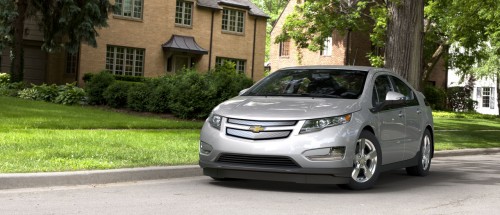
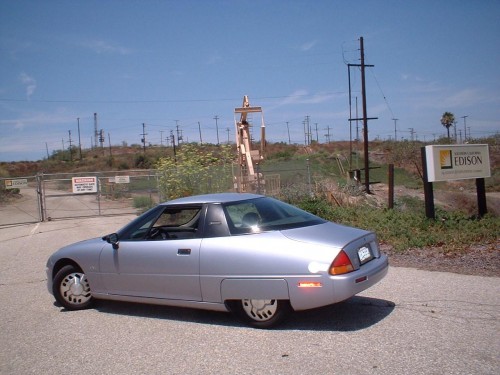

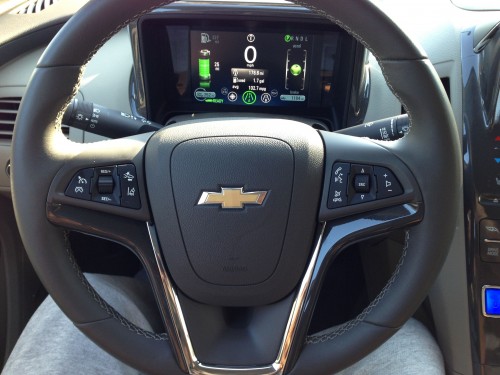


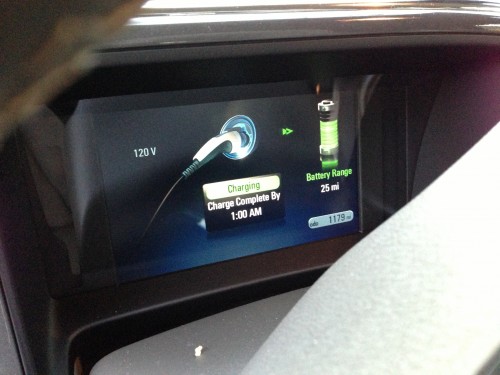
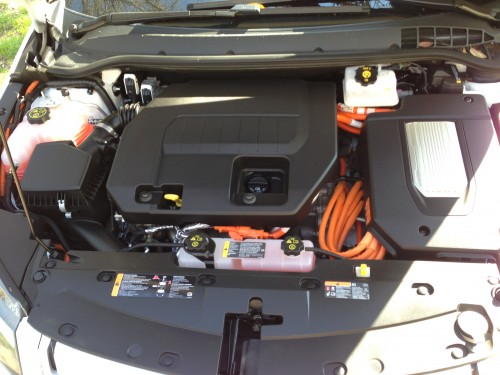
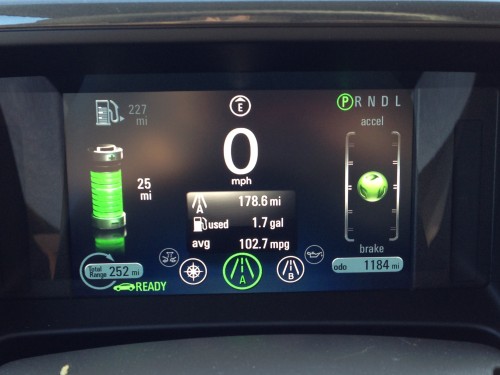
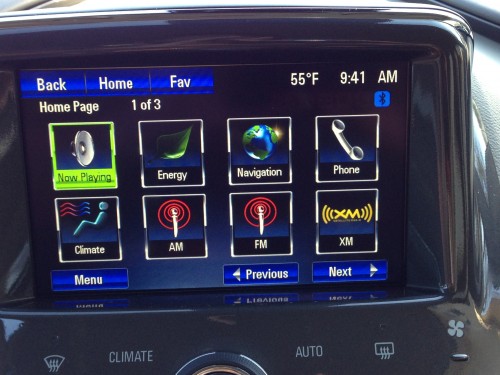
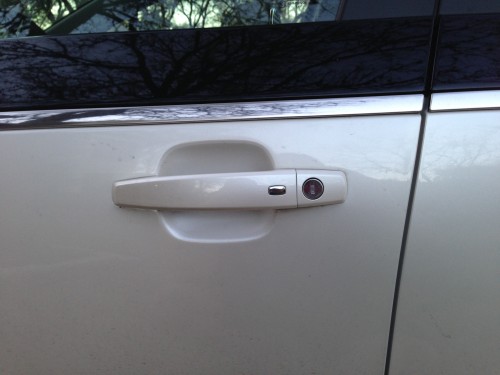
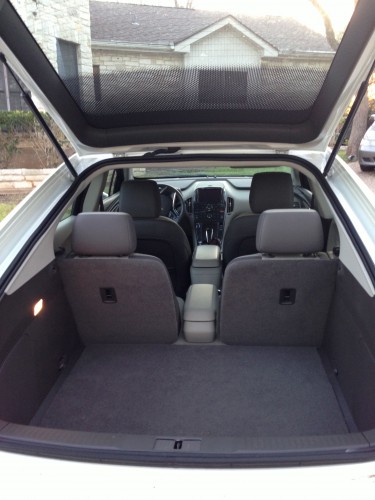
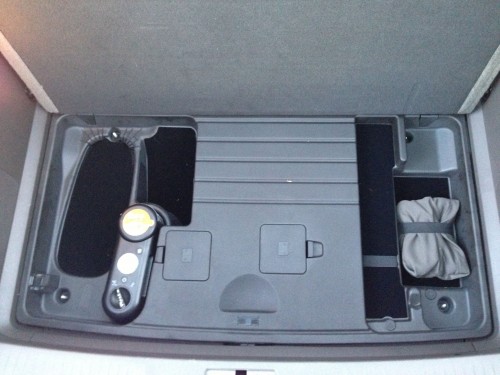
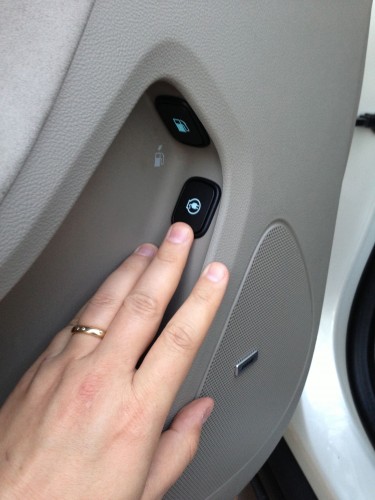
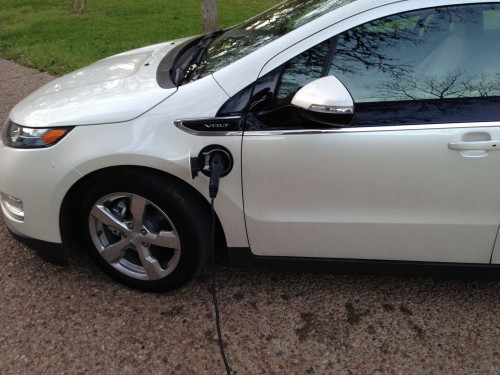
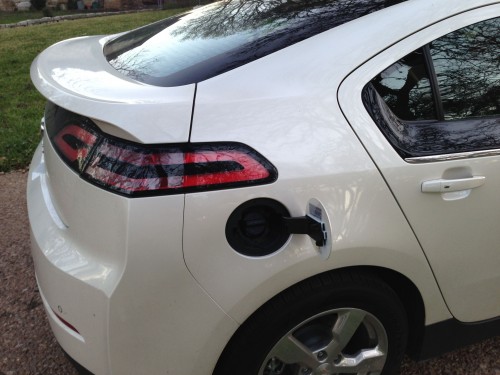
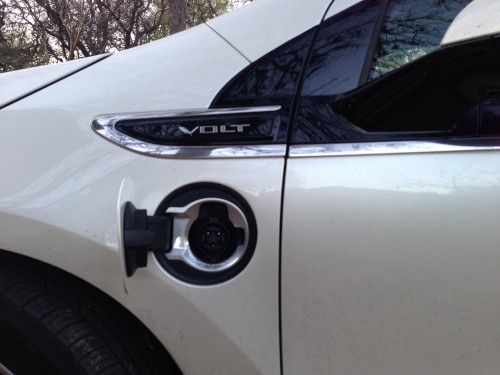
Great review Doug!
So if I am reading this right, you didn’t need fill the car up once during your week with it? Did you get a readout on what your average MPG was?
You are absolutely right; I didn’t fill it once. I think I may have used a gallon of gas, but that was it. And that was only because I deliberately drove the battery down to zero to check the recharge time from flat.
The readout did show the MPG, but I forgot to mark it down; sorry about that!
No worries on the MPG! It must be reasonably high if you barely used the gas all week.
I’ve owned a Prius for almost four years, and I love it…if the Volt had the same cargo space as the Prius I would consider it. Maybe the next Volt will be a hatchback! —
Sent from my thumbs.
It is a hatchback; I’m embarrassed that I didn’t make that clear!
Here’s a Google Docs Spreadsheet to calculate the Effective MPG of the Chevy Volt over a 30 day period: https://docs.google.com/spreadsheet/ccc?key=0AvQihQnhOYHGdDhJRjAwWFpQMXZYc0ptWnd1TWZxNlE#gid=0
Great info; thanks Greg!